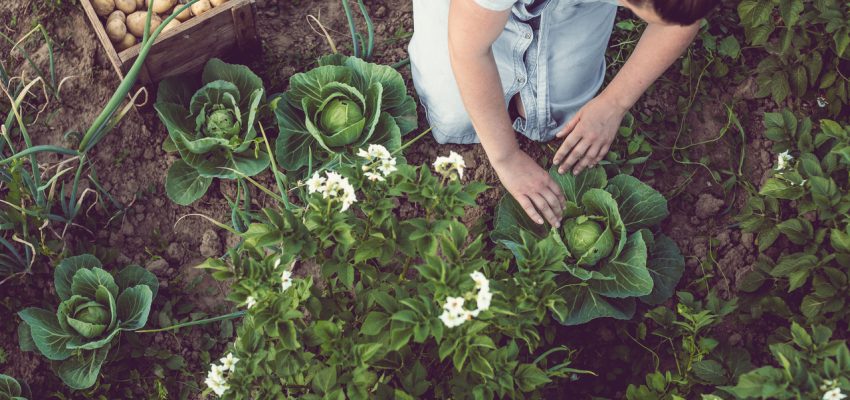There’s a lot to love about composting. It fights food waste while enriching your garden soil and building up a healthy biome of microorganisms. A fresh load of good compost is almost like saying “thanks” to the Earth. The planet has given you delicious food, and now you’re giving it back more nutrients to keep the soil strong and healthy!
Before you begin composting, it’s important to know some basic tips that will help you get started the right way. Check out these six fundamentals of composting and how you can apply them when starting out.
- Learn about composting services that your state and/or local government offers.
An increasing number of state and local governments offer services that will help you compost! Thus, the first step is to learn about any municipal composting in your area. California residents, in particular, should take a minute to get up to speed on California’s composting law and its rules regarding topics like the use of trash compactor bags.
Your local sanitation or environmental department’s website is a good place to start looking for composting information. Even if there aren’t any municipal composting programs, they’ll often still have resources you can use, including compost drop-off points and local composting rules.
- Know what can go in compost and what can’t.
An amazing variety of things can go in your compost. These are some of the many things that you can happily toss into your composting bin or pile:
- Fruit and vegetables
- Coffee grounds, coffee filters and tea bags
- Paper and cardboard
- Grass clippings
- Dead leaves
- Bread and pasta
- Nuts and beans
However, there are also some things you should avoid putting in your compost, including:
- Yard waste from plants treated with fertilizers or pesticides
- Scraps from seafood or meat (including bones)
- Dairy products
- Animal waste
These aren’t comprehensive lists, so if you’re ever unsure about whether something can go in the compost, research it first. If you’re using compostable trash bags, remember that they’re intended for industrial composters, not backyard compost piles.
- Get your family or housemates involved.
Your compost will fill up with good stuff more quickly if everyone in your household knows to use it for their scraps! Place your compost bucket in a convenient location that’s easy for everybody to access and remind people to use it when they’re cleaning up after a meal. Consider hanging a composting chart if people in your house have trouble remembering what can go in the compost.
If you have kids, working on compost with them is a great opportunity to talk about conservation, food waste and other important environmental topics. Have your kids help you “feed” the compost bin and explain what’s happening to the material as it decomposes. When tasks like composting are included in the everyday routine, it sets a positive example to help kids develop their sustainability smarts and get acclimated to a greener lifestyle.
- Maintain the right balance of ‘browns’ and ‘greens.’
Compostable materials are generally either “browns” (dry, high-carbon material) or “greens” (moist, high-nitrogen material). Browns generally include dead leaves, paper, untreated cardboard, sawdust or twigs. Greens include fruit and veggies, grass clippings, coffee grounds and eggshells. The greens promote growth of microorganisms, and the browns provide food for those organisms.
A general rule of thumb is to keep a ratio of three or four parts browns to one part greens. Too many browns slows the breakdown of materials, while too many greens can overheat your compost and create excessive odors. However, composting isn’t an exact science, so experiment with the mixture and develop your intuition about what your pile needs.
- Turn your compost regularly.
To keep your compost pile healthy and aerated, it’s important to turn and mix it regularly. This has multiple positive effects. First, it introduces more oxygen into the pile to feed the microorganisms inside. Second, it spreads out microbes and their food sources over the pile to get a more even rate of decomposition. This prevents overheating and keeps your microbes from consuming all of their nutrition so quickly that they die off.
If you’re using a composting tumbler, you can simply turn the handle on the tumbler a few times to give it a good jumbling up. If you’re not, a little bit of vigorous stirring with a pitchfork or shovel will work just as well. Conventional wisdom suggests turning your pile anywhere from every three days to once a week, but there are no hard and fast rules.
- Keep your compost around the moisture level of a wrung-out sponge.
Your compost microbes also need water — but not too much. To tell if your compost is at the right moisture level, most experts recommend picking up a handful and squeezing it. (You’ll get over the yuck factor pretty quickly.) The ideal moisture level is about the same as a wrung-out sponge: not dry, but not soggy.
Need a little more moisture in your compost? Give it a sprinkle with a normal watering can, turning it several times until it’s the right consistency throughout. If your compost is too wet, on the other hand, seek out some more “browns” such as newspaper or dead leaves. People who live in wet climates may also need to cover their compost to ensure that it’s not taking on too much water from rain or ambient moisture.
Composting is one of the best tools that we have for building a greener and more sustainable lifestyle. While it does have a learning curve, the good news is that all of your materials are waste anyway — so if it goes awry, you can always try again!




